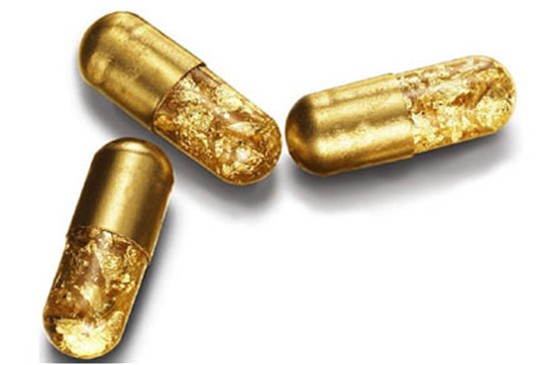Until very recently, vitamin D was being touted by many doctors as something nearly everyone should take. However, over the past two years, many studies have shown negative results with vitamin D. For example, it was recently reported in JAMA Internal Medicine (JAMA) that women taking either high or low doses of vitamin D experienced no benefit with regards to bone density and muscle strength. Last month, a study in the British Journal of Nutrition showed no benefit from vitamin D on markers of inflammation, while yet another, on obese teens, published in Pediatric Obesity found no benefit on arterial function and an increase in triglyceride and total cholesterol levels.

What's worse, a study in London published in June in the journal Thorax showed that people given high-dose vitamin D every two months (averaging 2,000 IU per day) for a year were actually more likely to develop upper respiratory infections than those given a low dose (400 IU per day) -- and their infections lasted longer. Other studies have shown that people with the highest levels of vitamin D in their blood (over about 40 ng/mL -- typically due to excess supplement use) are more likely to develop heart disease, cancer, and die during studies when compared to people with moderate levels (National Acadamies Press 2010; JCEM 2012).
What's going on? It seems that initial reports led some experts to ignore the recommendation of the National Academies' Institute of Medicine, which says that only people with vitamin D levels under under 20 ng/mL are deficient. Instead, these experts argued that people need to maintain levels which are at least 50 percent higher -- 30 ng/mL. Other researchers drank this Kool-Aid, launching studies in people who were not deficient in vitamin D (with levels between 20 and 30 ng/mL), giving them large doses to boost blood levels into the upper 30s, 40s, and 50s. Confusion may have also occurred because vitamin D levels are sometimes reported using a different unit of measurement in which 20 ng/mL is expressed as 50 nmol/L, leading a causal reader to believe they need to maintain a level 2.5 times what is correct.
Further feeding this frenzy have been clinical laboratories -- which profit from more vitamin D tests. When you get a vitamin D test back, the "normal" range shown next to your result often extends up to 100 ng/mL (which is actually far beyond the normal range), leading people with levels in the 20s, for example, to believe they needed more vitamin D.
Companies selling vitamin D supplements have not helped, producing and marketing vitamin D supplements which provide thousands, rather than hundreds, of IUs per dose -- amounts you'd only want if you were seriously deficient. Be aware that supplement makers can legally put any amount of vitamin D they want in a pill and it's not necessarily the right amount for you.
(As a rule of thumb, to raise your vitamin D level 1 ng/mL, you need to get an extra 100 IU to 200 IU of vitamin D per day. People who get little sun and little to no vitamin D from food and supplements can have levels in the single digits, but, more commonly, people who don't take supplements have levels of about 15 to 25 ng/mL -- and up to the 40s if they get a lot of sun exposure.)
We knew it was time to sound an alarm when we at ConsumerLab.com began receiving emails a few months ago like the following:
My doctor suggested that I take 5,000 IU of vitamin D per day. My level is now 67 ng/mL. Is that too high? The lab report shows the normal range to be 20 to 100 ng/mL.
Vitamin D can be helpful in many ways. Not only can it help prevent rickets -- a crippling weakening of the bones -- but it may also decrease falls and fractures, improve asthma, and reduce the risk of upper respiratory infection. These are tremendous benefits for small amounts of a vitamin which, we at ConsumerLab.com have shown, can be obtained from good quality supplements for only pennies a day. But these benefits result from correcting vitamin D deficiency or inadequacy -- not overdosing. People are now pumping their vitamin D levels to dangerous levels. A study comparing vitamin D levels in people in Minnesota in 2013 vs. 2002 showed that high levels that were once extremely rare have become more common (Mayo Clinic Proceedings 2015).
Making matters worse, our tests at ConsumerLab.com have shown that some popular supplements actually contain nearly twice as much vitamin D as claimed on their labels (ConsumerLab.com Vitamin D Product Reviews - 2015 and 2013). This can cause unsuspecting consumers to exceed the limits of safe intake, which is 4,000 IU per day for adults.
If you don't get much sun exposure and don't consume vitamin D from fortified foods, such as dairy foods, you may be deficient. Taking 400 to 1,000 IU is very safe. If you are unsure, get your vitamin D blood level checked and make sure your level is at least 20 ng/mL. Otherwise, don't overdo a good thing.
Update: A study published just this week in JAMA Neurology showed that older adults with adequate vitamin D levels experienced significantly less decline in cognitive function than those with lower levels of vitamin D. That's good news. Fortunately, the researchers used the correct threshold for vitamin D adequacy: 20 ng/mL. Had they chosen a higher level, such as 30 ng/mL, this important finding may have been missed.
Fuente: www.huffingtonpost.com
